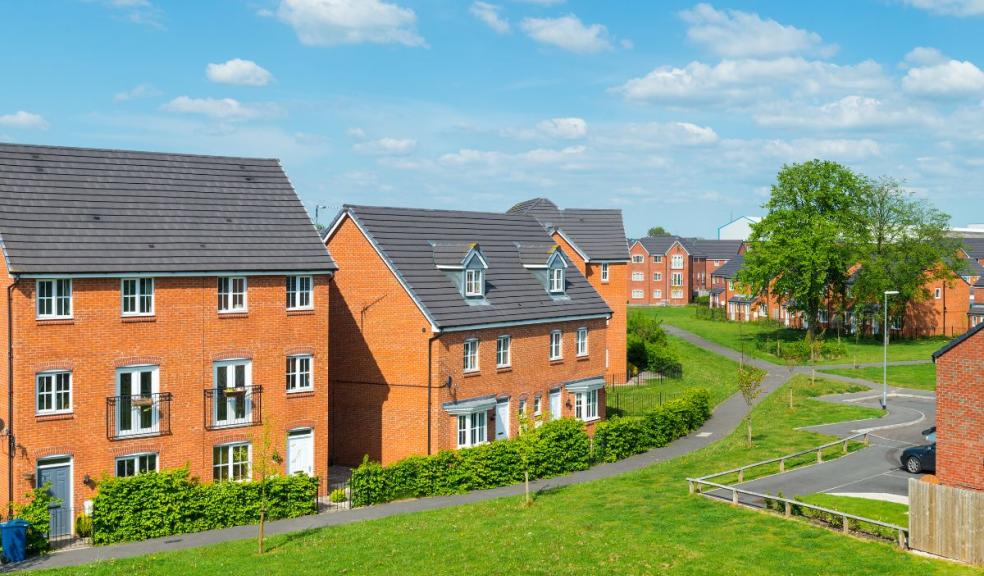
The Upwards Trajectory on the Graph of Build to Rent Investment Potential by Andrew Jones, Group Director, Corporate Lettings & Build to Rent, Leaders Romans Group (LRG)
There’s no denying that investment within the private rented sector (PRS) is being challenged. But while individual landlords are increasingly being compromised, the rental sector provides greater opportunity to institutional investors than ever before.
Analysis released by the British Property Federation (BPF) on 20 October states that the sector could be worth £170bn by 2032 as a result of the number of Build to Rent (BTR) units in the UK rising from 76,800 to more than 380,000.
The difficulty that individual landlords face is the raft of new regulations introduced by the Government in an initiative to ‘professionalise’ the private rented sector (PRS). This determination, along with further regulations, was embodied in the June’s policy paper A fairer private rented sector, which paves the way for a Renters Reform Act. Essentially ministers’ aim is to rid the market of the archetypal 'rogue landlord' (who, the policy paper itself admitted, constitute just fraction of all landlords) – and to pass that opportunity to institutional investors and corporate landlords. We have experienced a shift in focus on product quality, attention to detail and ensuring resident satisfaction levels are and remain of the highest standard. These are the step changes and rightly the primary focus for these new emerging corporate investors and operators.
The withdrawal of thousands of amateur landlords from the market has led to a significant shortage of rental properties: according to Rightmove, the number of tenants in the UK increased by 6% in 2022 but this coincided with 50% fewer properties being available, and we have seen similar figures play out across our Leaders and Romans branches. These circumstances, added to the encouragement given by Government to institutional landlords, provides the perfect circumstances in which to invest in the PRS.
The English Housing Survey 2022 demonstrates the extent to which the market is growing: it states that the number of households renting privately has increased by 93% in the last 15 years, while the number of owner-occupied households has grown by just 3% over the same period. According to Government figures, the number of renting households with dependent children has doubled since 2003/4, making up 30% of the sector. The same figures show that the numbers of ‘comfortable renters’ are expanding too, with this demographic representing 44% of the rental sector. These approximately 1.94 million households consist mostly of those in managerial professions, who hold degrees and are in good health. And a substantial proportion expect to remain within rented properties long term.
It is this shift in the demographic profile of renters and the significantly increased numbers choosing to rent that has turbo-charged the BTR sector.
And BTR is no longer limited geographically. From the outset, the vast majority of BTR schemes have been in London, but this has now been surpassed by regional growth. The BPF’s Build to Rent Q1 2022 analysis found that whereas 5,802 completed BTR homes were in in Capital, 5,901 were in the regions. It reported that regional BTR grew 16% year-on-year, to reach 58% of the total BTR sector pipeline; London, meanwhile, lags behind slightly with 12% year-on-year sector growth and 42% of the total pipeline.
And so the ideal model for investment in the PRS has evolved: the BTR suburban community. Providing desirable homes for families in fully-functioning serviced communities, this product – which offers growing families considerable flexibility and a wide range of options for a stress-free lifestyle, is undoubtedly the division of the property sector in which we will see the greatest growth over the next decade.
Its potential for expansion is almost unlimited, as counter-urbanising maturing Millennials seek family homes in bespoke communities. Those who have previously experienced the high level of service provided by traditional BTR are thought likely to provide the core market for BTR suburban communities. This innovative, service-based product will compare favourably with most of the stock currently available in the PRS, and the popularity of the product will enable BTR suburban communities to attract high levels of investment and grow rapidly, perhaps with even greater success than its multi-family BTR cousin.
For investors, there are other distinct advantages in BTR suburban communities. One is that the variety of property types (residential, commercial, retail and leisure) which exist within any one portfolio, creating immediate sales revenue and long-term rental revenue, with the potential to spread the investment according to the market conditions.
There is also considerable potential in partnerships with local authorities and housing associations which enable BTR to cross-subsidise other property assets including schools and leisure facilities offer opportunities joint ventures.
With higher inflation on the cards for the foreseeable future, residential property (the value of which has increased by more than 60% over the last ten years, according to Nationwide) is invariably a safer option than more fluid investments. Despite a year of political and economic uncertainty, figures from the Office for National Statistics in the year to May 2022, as reported in the Times, show new build prices up 26.5% in a year. And as household budgets come under increased pressure and mortgage rates continue to increase, more families than ever are likely to remain within the PRS.
In our 40 years’ experience as lettings and management agents, we have seen institutional investors disregard residential property as too fragmented and management-intensive. Free of these restrains, the BTR suburban communities model appeals to investors specifically because it enables them to acquire a portfolio of residential and commercial properties, aggregated to create a single investment unit. At LRG, because of the substantial number of properties on our books and strong links with local markets, we have the added advantage of enabling clients to expand their portfolios as new opportunities become available. We’re currently seeing stronger demand for BTR suburban communities than for traditional BTR, as, offering a high level of services and reliable management, BTR investments are higher-yielding than most residential or commercial assets.
So despite the currently political and economic turmoil, the future for BTR suburban communities shows no sign of abating. Amalgamation with other property classes including the later living and affordable housing sectors, joint ventures leading to innovative cross-subsidies, and public/private partnerships are adding to the wide-ranging appeal.
Furthermore, the BTR suburban communities model in the UK has some catching up to do with other markets: in Europe a high proportion families rent (as many as 60%, for example, in Switzerland) and in the US the predominant form of BTR, accounting for 70% of the market, is larger, family-oriented homes, within low-rise, suburban developments.
Recent research among global institutional investors found that 70% anticipated being active in the BTR suburban communities market within the next five years: a substantial increase from the 42% currently active. The same survey found that institutional investors planned to invest a record £16.5bn in residential assets in 2022: a 65% increase from the £10.2bn spent in 2021. With John Lewis and others leading the way with significant success, the steep line on the graph looks set to continue its upwards trajectory.
Download Leaders Romans Group’s White Paper: https://marketing.lrg.co.uk/btr-suburban-communities-white-paper.









